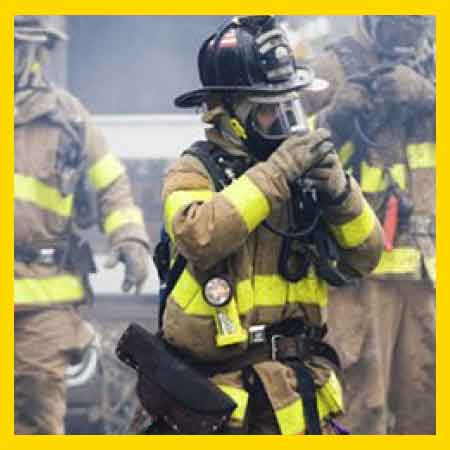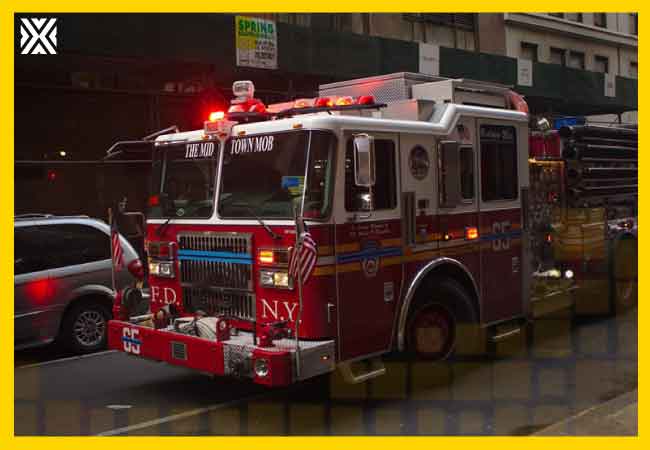Currency
February 09, 2019

It’s February, which means that Valentine’s Day is right around the corner, and love is in the air. At the National Institute for Occupational Safety and Health (NIOSH), we like to use this time of year as an opportunity to show our appreciation for the personal protective equipment (PPE) that keeps the people we love safe.

In this spirit, NIOSH recently set a goal to improve the safety and health of fire fighters by reducing their exposure to harmful contaminants due to unclean or inadequately cleaned PPE. Fire fighter exposure to soiled or contaminated PPE is an increasing concern for long-term fire fighter health. The second leading cause of death across the U.S. is cancer and other diseases that result from chronic exposures; and fire fighters face a greater risk than most. One risk can be associated with fire ground exposures relating to protection and hygiene practices and persistent harmful contamination found in fire fighter PPE. Typically, fire fighter gear is washed by independent service providers. But how do you know that the gear is truly clean?
In order to establish the scientific background necessary to answer this question, NIOSH partnered with the Fire Protection Research Foundation to establish clear and definitive guidance for applying cleaning and decontamination procedures that effectively remove both chemical and biological contaminants from fire fighter PPE. This study, which is part of what we call the How Clean is Clean projectExternal, will help determine if PPE is truly free of harmful contaminants after using typical cleaning methods.
Already the project is making an impact. NIOSH researchers developed laboratory contamination, extraction, and analysis methods for heavy metals and semivolatile organic compounds. They then established a standardized method that can be used to determine the effectiveness of the cleaning techniques to decontaminate the PPE. Based on the results, NIOSH made recommendations to the National Fire Protection Association (NFPA) standards committees and established fire service guidance for maintaining contaminant-free PPE. This has translated into changes to the NFPA 1851 Standard on Selection, Care, and Maintenance of Protective Ensembles for Structural Fire Fighting and Proximity Fire FightingExternal.
Looking to the future, the How Clean is Clean team researchers have determined the same sort of lack of scientific evidence for another important fire fighter PPE question—How long does the gear remain reliable if well maintained or not often used? Answering this question will allow us to know how long turnout gear should stay in use when it is used often or in particularly hazardous scenarios. Thus, this next project is going to verify the testing performance requirements through the different stages of the gear’s life to verify that it’s still working properly.
NIOSH’s love affair with PPE is everlasting, and we will continue to identify areas where additional research is necessary to keep our PPE users safe.

In this spirit, NIOSH recently set a goal to improve the safety and health of fire fighters by reducing their exposure to harmful contaminants due to unclean or inadequately cleaned PPE. Fire fighter exposure to soiled or contaminated PPE is an increasing concern for long-term fire fighter health. The second leading cause of death across the U.S. is cancer and other diseases that result from chronic exposures; and fire fighters face a greater risk than most. One risk can be associated with fire ground exposures relating to protection and hygiene practices and persistent harmful contamination found in fire fighter PPE. Typically, fire fighter gear is washed by independent service providers. But how do you know that the gear is truly clean?
In order to establish the scientific background necessary to answer this question, NIOSH partnered with the Fire Protection Research Foundation to establish clear and definitive guidance for applying cleaning and decontamination procedures that effectively remove both chemical and biological contaminants from fire fighter PPE. This study, which is part of what we call the How Clean is Clean projectExternal, will help determine if PPE is truly free of harmful contaminants after using typical cleaning methods.
Already the project is making an impact. NIOSH researchers developed laboratory contamination, extraction, and analysis methods for heavy metals and semivolatile organic compounds. They then established a standardized method that can be used to determine the effectiveness of the cleaning techniques to decontaminate the PPE. Based on the results, NIOSH made recommendations to the National Fire Protection Association (NFPA) standards committees and established fire service guidance for maintaining contaminant-free PPE. This has translated into changes to the NFPA 1851 Standard on Selection, Care, and Maintenance of Protective Ensembles for Structural Fire Fighting and Proximity Fire FightingExternal.
Looking to the future, the How Clean is Clean team researchers have determined the same sort of lack of scientific evidence for another important fire fighter PPE question—How long does the gear remain reliable if well maintained or not often used? Answering this question will allow us to know how long turnout gear should stay in use when it is used often or in particularly hazardous scenarios. Thus, this next project is going to verify the testing performance requirements through the different stages of the gear’s life to verify that it’s still working properly.
NIOSH’s love affair with PPE is everlasting, and we will continue to identify areas where additional research is necessary to keep our PPE users safe.









